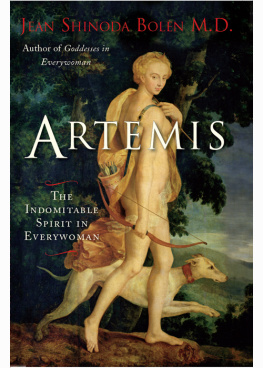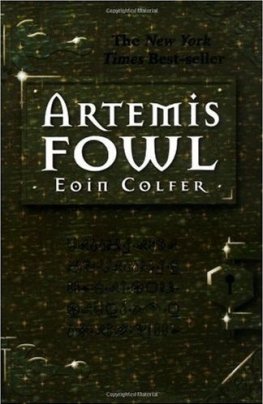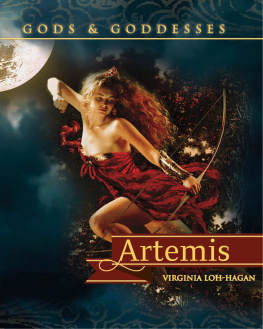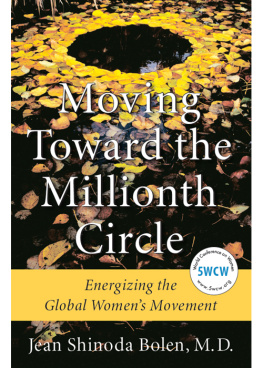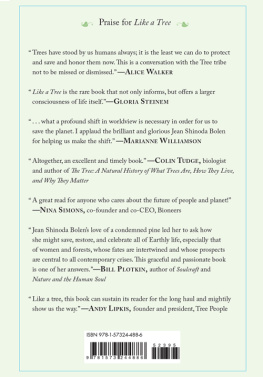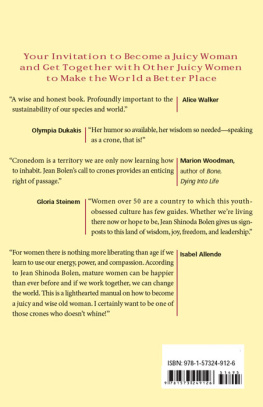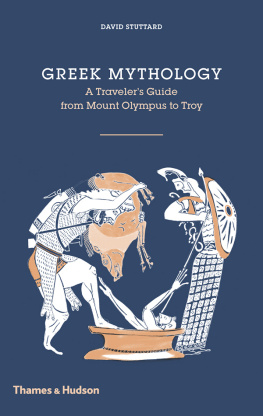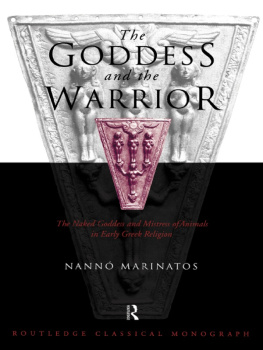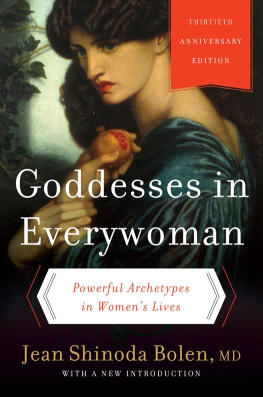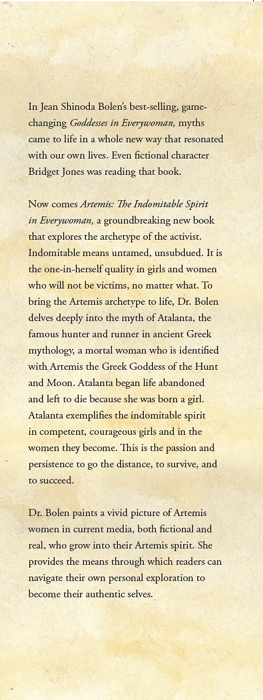
Other Books by Jean Shinoda Bolen
The Tao of Psychology
Goddesses in Everywoman
Gods in Everyman
Ring of Power
Crossing to Avalon
Close to the Bone
The Millionth Circle
Goddesses in Older Women
Crones Don't Whine
Urgent Message From Mother
Like a Tree
Moving Toward the Millionth Circle

First published in 2014 by Conari Press, an imprint of
Red Wheel/Weiser, llc
With offices at:
665 Third Street, Suite 400
San Francisco, CA 94107
www.redwheelweiser.com
Copyright 2014 by Jean Shinoda Bolen
All rights reserved. No part of this publication may be reproduced or transmitted in any form or by any means, electronic or mechanical, including photocopying, recording, or by any information storage and retrieval system, without permission in writing from Red Wheel/Weiser, llc. Reviewers may quote brief passages.
Preface by Anita Barrows, from RILKE'S BOOK OF HOURS: LOVE POEMS TO GOD by Rainer Maria Rilke, translated by Anita Barrows and Joanna Macy, translation copyright 1996 by Anita Barrows and Joanna Macy. Used by permission of Riverhead books, an imprint of Penguin Group (USA) LLC.
ISBN: 978-1-57324-591-3
Library of Congress Cataloging-in-Publication Data available upon request.
Cover design by Jim Warner
Cover photograph: Artemis the Huntress (oil on panel), Fontainebleau School, (16th century) / Louvre, Paris, France / The Bridgeman Art Library
Interior by Maureen Forys, Happenstance Type-O-Rama
Typeset in Adobe Caslon Pro and Trajan Pro
Printed in the United States of America
EBM
10 9 8 7 6 5 4 3 2 1
www.redwheelweiser.com
www.redwheelweiser.com/newsletter
For women and girls who identify with Artemis.
For girls who admire Artemis in others
and find this archetype is their growing edge.
For women in whom Artemis may be a late-blooming archetype.
For all who discover the indomitable spirit in themselves.
Or has loved it in someone else.
Contents
Introduction
The Indomitable Spirit in Everywoman
(Latin in + domitare: to tame; incapable of being subdued or tamed)
I ndomitable spirit is an attribute in women who have Artemis as an active archetype. In mythology, Artemis is the Greek Goddess of the Hunt and Moon, known as Diana to the Romans. She was the first-born twin sister to Apollo the God of the Sun. As goddess of the hunt, she roamed the wilderness, armed with a bow and quiver of arrows, accompanied by her hunting dogs, either alone or with her chosen nymph companions. Artemis came to the rescue of her mother, was the protector of pre-pubescent girls and young animals. Pregnant women prayed to her to relieve them from pain. (Artemisiathe herb that bears her name, is used by midwives for this). She reacted swiftly to help those under her protection and to punish those who would harm them or disrespect her. Artemis is an archetypal predisposition toward egalitarian-brotherly relationships with men, a sense of sisterhood with women, the ability to aim for a distant target or rise to a challenge, and a preference to be in nature rather than cities.
Artemis: The Indomitable Spirit in Everywoman is a coming-full-circle book. I go back to the story of Atalanta that led me to write Goddesses in Everywoman: A New Psychology of Women, a book that initially became an unexpected best-seller, then a classic, celebrated by the publication of its thirtieth anniversary edition in 2014. It began as an entirely different book about two paths of feminine development with the working title Pathways to Wholeness. It was based on Greek myths about Psyche and Atalanta, two mortal women, one identified with Aphrodite, the other with Artemis.
In Jungian literature, the myth of Psyche is the model for the psychological development of the feminine psyche. While it does apply to many women, to say that this was the pattern for all women did not ring true for me. Psyche was the mortal woman who offended Aphrodite. Pregnant and abandoned by her lover, she tries to drown herself and finds she cannot. She then is given four tasks to complete and is initially overwhelmed by each task. Symbolic helpers then come to her rescue (each represents an inner resource that she did not know she has) and as the tasks are done, she grows psychologically. I wanted to find another myth that would apply to women who took on challenges, ventured into new fields, defined themselves, and who entered occupations and professions that had traditionally been male strongholdwomen who were at ease with men as friends and equals. I found Atalanta.
My focus expanded after I wondered: What about the other Greek goddesses? And then, as if in response to this question, Hera, Goddess of Marriage, appeared in the psyche of a woman who had been taken over by Hera in her jealous aspect. My interest shifted to the major goddesses in Goddesses in Everywoman. As a result, only remnants of the Atalanta story remained, at the end of the Artemis chapter, and Psyche's four tasks were incorporated into the Aphrodite chapter.
My interest in Atalanta was renewed the summer before I began writing this book, when I taught at the C. G. Jung Institute in Kusnacht, Switzerland for the first time. Kusnacht is Jung's hometown on the shore of Lake Zurich and, although I did not train there, I think of it as the mothership of Jungian institutes. For the first time in over a decade, I told the myth of Atalanta and amplified its meaning to an international student body. It came alive in me and in the room. I remembered why I had become interested in Atalanta in the first place.
Atalanta and Artemis
Atalanta is a famous hunter and runner in the ancient Greek myth of a mortal woman, who was rejected and left to die when she was born. She survived, the ancient storytellers said, because she was under the protection of Artemis. Atalanta exemplifies the indomitable spirit in competent, courageous girls and in the women they become. This indomitable spirit refuses to give up on what she knows to be true for herself. These women have grit and the passion and persistence to go the distance, to survive and win.
Girls and women with indomitable spirit are the new protagonists in many of the most-read novels and fictional series of this century. They have emerged in the creative process of authors with a reality that seems to blend invention and active imagination. I believe that these emerging female heroes are captivating readers because of a morphic resonance. Energies and archetypal patterns in the collective unconscious are rising into our individual consciousness and changing assumptions about women and in women.
Katniss Everdeen is an Atalanta in Suzanne Collins' The Hunger Games trilogy; Lisbeth Salander is a darker side of this same spirit in Steig Larsson's The Girl with the Dragon Tattoo. I also see Atalanta in Anastasia Steele, the main character in E. L. James' Fifty Shades of Grey who ventured into the wilderness of emotion and sexuality. These are young women who call upon their intuition, depth of feeling, and courage to go beyond previous limits; who feel fear and outrage and have to adapt and endure and not give in or give up. Each has an inner spirit that is not subdued, a will that is not broken. Each in her own way is a quirky, independent, courageous person who is in uncharted territorythe metaphoric wilderness, the realm of Artemis.
Next page
